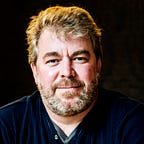The “wildfire” narrative distracts us from the problem
There is nothing “wild” about the fires that are raging through rural and increasingly urban centers in the western United States and Canada every year. Calling them “wild” distracts from and excuses the behaviors that ultimately cause them, and ensures that the underlying problems will never be recognized, nor solved…
When we say that something is “wild” (part of the “wilderness”) we imply that it is operating in a state of nature. Things that happen in the “wild” are nobody’s fault, they are simply an “Act of God.” It is not something we can do anything about, we simply have to endure and learn to live with it. There is a “wildfire” narrative that is built around the fantasy that these are somehow “natural” events occurring in “natural” places, and this gives rise to a displacement of our angst, an obsessive focus on the “cause” of the fire that considers only the first ignition, but ignores the rest. There is nothing else to consider, the rest of the chain reaction is pre-ordained, part of the “natural order.” The dominoes were set up by nature, we can only point to the first domino falling, the rest was…inevitable, just the way it is.
Any responsibility of humankind in a “wildfire” narrative is often limited to the possibility that a person went into nature, and started it. Was it a careless campfire? A kid playing with fireworks? A smoldering cigarette butt? Or was it just a lighting strike, in which case we have nothing to be angry about, nobody to blame?
This “wildfire” narrative warps our minds into myopic obsession over isolated symptoms, completely missing the broader disease. We often don’t ask why the forest was so flammable to begin. We forget that a fire is a chain of events, and that the linking (and the kind of links) of the chain is key to the scale and severity of a fire. We don’t ask why a few embers in a campfire should give rise to a massive conflagration capable of consuming thousands of square miles and displacing populations of hundreds of thousands of people each year. We can only place our blame on the point of ignition.
Anyone who has lived in fire-prone regions, who follows the news media and discussions surrounding each “wildfire,” they are accustomed to seeing this narrative and obsession over the first ignition play out every time. The worn out “news” stories about officials investigating who sparked it, the possibility of criminal charges, etc.. It is baked into our culture, our mass behavioral response to these large fires, it goes according to the same predictable narrative each and every time.
The “wildfire” narrative is rooted in public ignorance of what constitutes “nature.” Part of this ignorance is intentional, reinforced by a desire to avoid responsibility and culpability that implicates our way of life. Perhaps facing the truth would cause us to question our own cherished fantasy narratives about our way of life, bursting bubbles that we would rather try to maintain, even as events that burst these bubbles spiral out of control all around us.
The forests in western North America and Canada are not natural. Truly natural forests disappeared long ago from much of North America, a process that largely began in the east and swept to the west coast. It happened so long ago that people no longer remember what they were like, few people even talk about it today. Now we only have a few relics remaining of the old growth canopy forests, and even these are very different from their natural state since they are not large enough to support the same variety of species that used to thrive there, and they are affected by fishing, hunting, pollution, invasive species, disease, and human intrusions such as roads, buildings, and arbitrary property divisions. And, of course, climate change.
Today’s forests are best described as overgrown, poorly managed, farm and ranch agricultural lands. These are properties that have long ago been given over to timber harvest, cattle grazing, and other economic uses that dramatically transformed them from their natural state to what they are at present. Therefore, to a good first approximation, fires in these places are best described as agricultural fires. By making this first step and admitting that these are not “wild” lands, then we can begin on a journey to understanding how negligence, greed, corruption, and exploitation have given rise to the present state of affairs…and how the “wildfire” narrative provides cover for these to continue unabated.
In future pieces, I’ll continue to explore how fantasy narratives cause an obsessive focus on all kinds of symptoms, which distract us from seeing and addressing the underlying disease that plagues all life on planet Earth. If you’d like to hear more as these appear in the future, then click “Follow” in the sidebars and perhaps Medium will alert you when new pieces appear.
